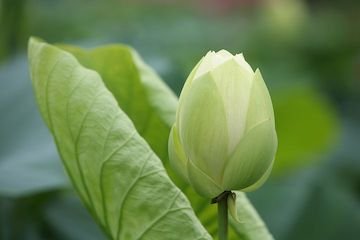The Tenth Stage
Part 12

Introduction
Stages of the Mahayana Bodhisattva Path are similar to the Theravada idea of the Noble Eight-fold Path, although not the same in the order of the stages, as well as the aim of the various stages that comprise the total trajectory that the Bodhisattva has to traverse. The idea of the Bodhisattva path is linked to the idea of bodhicitta, the aspiration of becoming enlightened, and this aim is for the benefit of all sentient beings—when compared to the Arahant idea it is distinguished by the fact, that the Bodhisattva holds off on attaining final non-returning Nirvana until all sentient beings are brought along the journey of the Bodhisattva path towards Enlightenment.
Mahayana Texts
Various Mahayana texts discuss the stages of the path in varying detail and order. For this twelfth and final article in the series, I’ve mainly followed the stages of the Path as explained in the Dasa Bhumika Sutra. Dasa bhumika in Sanskrit means ten stages.
I’ve also consulted the abhidharma-samuccaya text of Asanga, the prajna-paramita abhi-samaya-lankara, the Maha-vastu, and the Mahayana-sutralamkara text. The Avatamsaka Sutra (Flower Ornament Scripture) has great details on the 10 stages of the path as well, including the Gandavyuha commentary. For cross-reference purposes I’ve used the yogacara-bhumi text, which incorporates the Bodhisattva path into an even greater 17 stages, to verify Sanskrit terminology. The ‘Materials for a Dictionary of The Prajnaparamita Literature’ by Edward Conze has been very useful, in verifying Sanskrit terms as they are used in the various Prajna Paramita texts.

In this article, I’ll cover the tenth and final stage of the 10 Stages of the Mahayana Bodhisattva Path. I’m also including a ‘bonus’ stage, that is being mentioned in some of the texts.
As we are on the last stage, I’d like to quote a passage from the Samdhinirmochana Sutra, concerning the Eight kinds of Excellence to be purified by a Bodhisattva:
Avalokiteshvara then went on to ask the Buddha, “In these stages, how many kinds of excellence are defined?”
The Buddha replied, “In brief, there are eight.
- First is purity of strong determination (ava-dharana)
- Second is purity of mind (citta)
- Third is purity of compassion (karuna)
- Fourth is purity of transcendence (samatikrama)
- Fifth is purity of seeing Buddhas and offering service (buddha-darsana upasthana-paricarya)
- Sixth is purity of maturing sentient beings (pari-paka sattva)
- Seventh is purity of (re-)birth (samcintya-bhava-pratikanksi)
- Eighth is purity of spiritual powers (adhisthana / maharddhika)
- In the first stage, the ignorance of clinging to person and things, and the ignorance of the defilement of wrong tendencies and actions have been purified.
- In the second stage, the ignorance of minute errors and transgressions, and the ignorance of what various actions lead to have been purified.
- In the third stage, the ignorance of greed, and the ignorance of complete mental control to retain what is learned have been purified.
- In the fourth stage, the Bodhisattva addressed the ignorance of attachment to attainments in concentration, and the ignorance of attachment to religion.
- In the fifth stage, the Bodhisattva addressed the ignorance of one-sided thought rejecting life and death, and the ignorance of one-sided thought heading for nirvana.
- In the sixth stage, the Bodhisattva addressed the ignorance of observing the flux of events at the moment, and the ignorance of elaborate active mental patterns.
- In the seventh stage, the Bodhisattva addressed the ignorance of subtle active mental patterns, and the ignorance of method in one-sided formless awareness.
- In the eighth stage, the Bodhisattva addressed the ignorance of making effort toward the formless, and the ignorance of control over forms.
- In the ninth stage, the Bodhisattva addressed the ignorance of control of the intellectual powers and mental command of ultimate understanding of infinite expressions of truth, and the ignorance of free command of special knowledge of comprehension and communication.
- In the tenth stage, the Bodhisattva addresses the ignorance of great mystic powers (dharani), and the ignorance of awakening to subtle mysteries.
- the stage of becoming one of the clan,
- the eighth-lowest stage,
- the stage of vision,
- the stage of refinement,
- the stage of him who has done,
- the stage of a Solitary Buddha (pratyeka-buddha),
- the stage of a Bodhisattva,
- is established on the Buddha-stage—this is the tenth stage of a Bodhisattva, a great being.
- Boin-Webb, Sara — Abhidharmasamuccaya, The Compendium of the Higher Teaching (Philosophy) by Asanga, 2000, Asian Humanities Press.
- Cleary, Thomas — Buddhist Yoga a Comprehensive Course, The Samdhinirmochana Sutra, 1995, Shambhala Publications.
- Cleary, Thomas — The Flower Ornament Scripture, A Translation of the Avatamsaka Sutra, 1993, Shambhala Publications.
- Conze, Edward — Materials for a Dictionary of The Prajnaparamita Literature,1973, Suzuki Research Foundation.
- Conze, Edward — The Large Sutra on Perfect Wisdom with the Divisions of the Abhisamayalankara, 1975, University of California Press.
- Conze, Edward — The Perfection of Wisdom in Eight Thousand Lines and Its Verse Summary second printing, 1975, Four Seasons Foundation.
- Dayal, Har — The Bodhisattva Doctrine in Buddhist Sanskrit Literature, 1932, Motilal Banarsidass.
- Dutt, Nalinaksha — Mahayana Buddhism, 1978, Motilal Banarsidass.
- Jones, J. J. — The Mahavastu Volume 1, 1949, Luzac & Company Ltd.
- Kimura, Ryukan — A Historical Study of the Terms Hinayana and Mahayana and the Origin of Mahayana Buddhism, 1927, University of Calcutta.
- Sparham, Gareth — Abhisamayalamkara with Vrtti and Aloka in Three Volumes, 2008—2011, Jain Publishing.
- Wayman, Alex — Analysis of the Sravakabhumi Manuscript, 1961, University of California Press.
- Williams, Paul — Altruism and Reality, Studies in the Philosophy of the Bodhicaryavatara, 1998, Curzon Press.
- Williams, Paul — Mahayana Buddhism, The Doctrinal Foundations, second edition, 2009, Routledge.
- Wogihara, Unrai — Bodhisattvabhumi, 1930, Tokyo.
- The Ten Stages of the Mahayana Bodhisattva Path-The Two Preliminary Stages-Part 1
- The Ten Stages of the Mahayana Bodhisattva Path-The Two Preliminary Stages-Part 2
- The Ten Stages of the Mahayana Bodhisattva Path-The Two Preliminary Stages-Part 3
- The Ten Stages of the Mahayana Bodhisattva Path-The Two Preliminary Stages-Part 4
- The Ten Stages of the Mahayana Bodhisattva Path-The Two Preliminary Stages-Part 5
- The Ten Stages of the Mahayana Bodhisattva Path-The Two Preliminary Stages-Part 6
- The Ten Stages of the Mahayana Bodhisattva Path-The Two Preliminary Stages-Part 7
- The Ten Stages of the Mahayana Bodhisattva Path-The Two Preliminary Stages-Part 8
- The Ten Stages of the Mahayana Bodhisattva Path-The Two Preliminary Stages-Part 9
- The Ten Stages of the Mahayana Bodhisattva Path-The Two Preliminary Stages-Part 10
- The Ten Stages of the Mahayana Bodhisattva Path-The Two Preliminary Stages-Part 11
- The Deathless In Buddhism
- The "Timeless" Teaching-Being Beyond Temporality
- The Nine Successive Cessations In buddhist Meditations - Part 1
- The Nine Successive Cessations In buddhist Meditations - Part 2
- The Nine Successive Cessations In buddhist Meditations - Part 3
- The Twelve Links Of Dependent Origination
- THINGS to DEVELOP and THINGS to AVOID
- The First Noble Truth
- The Second Noble Truth
- The Third Noble Truth
- The Fourth Noble Truth
- 10 Fold Path Series
- EATING MEAT — WHY THE BUDDHA WAS NOT A VEGETARIAN
“These purities in the first stage increase and improve from stage to stage, to the purities of Buddhahood, except that there is no purity of birth in the stage of Buddhahood.”
“Also, the virtues in the first stage all exist equally in the higher stages, so you should know that the virtues of each stage are excellent, but the virtues of the ten stages of all enlightening beings all have something above them. The virtues of the stage of Buddhahood, in contrast, have nothing above them.”
Summary
Stage 10. The ‘Highest’ Doctrine stage (dharma megha bhumi)
The tenth and final stage is called the ‘Highest’ Doctrine, because the highest of perfection by the Bodhisattva is attained in the perfection of knowledge (jnana paramita). The literal translation of megha could be considered ‘up in the cloud’. The Bodhisattva now has the qualities of a full-fledged Buddha. Having mastered the entire path, they are now considered and recognized by all prior Buddhas. They have now completed the absorption and embodiment of the eternal doctrine (dharmakaya) in full.

In detail
This tenth stage is called dharma mega, because in this stage the Bodhisattva causes the Dharma to rain down on beings from the highest cloud, like rain from the sky. It is called cloud of teaching, because the gross body is as vast as space and the spiritual body of the Bodhisattva is fulfilled and purified, like a great cloud that can cover all.
Various types / levels of ignorance have been purified in the first nine stages, and in each subsequent stage the ignorance that is to be purified is more subtle and difficult to address than in the previous stage.

A Bodhisattva, on completion of the tasks of the ninth stage, arrives at the tenth stage. The Bodhisattva attains countless great concentrations, and completely understands how the world and its dharmas arise and cease, and how to perform the many tasks of a Buddha. His memory to retain the teachings is unsurpassed in skillful means, so that he can retain all dharmas that rain on him by infinite Buddhas.
Practitioners in the tenth stage have the ability to teach like clouds showering rain. In this stage—which is also called the stage of anointment or coronation, symbolizing anointment or coronation with the crown of all knowledge of all modes of reality—practitioners attain innumerable amounts of special concentrations and gain access to the higher knowledges characteristic of the enlightened. They attain inconceivable liberation; infinite powers of recollection; and ability to receive, absorb, and hold the revelations of the mysteries of complete enlightenment.
Having arrived at the tenth stage, how should a Bodhisattva, a great being be called a Tathagata (Buddha)?
When in a Bodhisattva, the ten perfections and the eighteen special Buddha-dharmas are fulfilled, and when there is the cognition of the knowledge of all modes, and a forsaking of all defilements and of the residues relating to them, and when the great compassion and all Buddha-dharmas have been fulfilled—it is then that a Bodhisattva, a great being, after the tenth Bodhisattva-stage, is verily to be called a Tathagata.
Which are the ten stages of a Bodhisattva, a great being?
A Bodhisattva, coursing through skillful means in all the perfections, having been trained in the thirty-seven wings of enlightenment, coursing in the Unlimited, the trances, and the formless attainments, coursing in the ten powers of a Tathagata, the analytical knowledges, the eighteen special Buddha-dharmas, having passed beyond nine stages, i.e.:

The Mahayana-sutralankara explains that this stage is so called, because it is all-pervading and far-reaching by the modes of Concentration and protective spells, as space is occupied by clouds. A Bodhisattva now enters on the Stage of consecration (abhiseka) and experiences many great concentrations (maha-samadhi). He acquires a glorious body (samanta-prabhata-kaya), which is seen in a celestial lotus adorned with jewels. He emits some rays of purifying light, which destroy the suffering and misery of all living beings. He performs many miracles and creates many magical bodies of himself (buddha-adhisthanam karoti = literally make ‘apparitional Buddha-body doubles’). The Bodhisattva attains the ten emancipations (vimukti / vimoksa), and especially cultivates the perfection of wisdom (jnana-paramita = prajna-paramita) without neglecting the other perfections.

The eleventh ’bonus’ stage
According to some Mahayana texts, there is an eleventh stage in the Mahayana Bodhisattva path. The Lankavatara Sutra, the Samdhinirmochana Sutra, and the Avatamsaka Sutra refer to this stage as the ‘final’ Buddha stage (tathagata-bhumi). These text differentiate between the tenth and eleventh stage, in saying that the tenth stage is ‘nirvana with remainder’ (sopadhika), and only the eleventh stage is considered ‘nirvana without remainder’ (nirupadhika).
The eleventh stage is called the stage of Buddhahood, because of permanently stopping the most subtle barriers of afflictions and knowledge, being unattached and unobstructed in dealing with all kinds of objects of knowledge, and realizing true enlightenment.

In the eleventh stage of Buddhahood, the Bodhisattva addresses the ignorance of extremely subtle attachment to objects of knowledge, and the ignorance of extremely subtle hindrances.
The Gandavyuha (avatamsaka sutra commentary) explains the eleventh stage, as the practice of Universal Good. Universally Good, the name of the supernal Bodhisattva Samantabhadra, who represents the active manifestation of the totality of all enlightening practice, is the fifty-third and final benefactor visited by the pilgrim Sudhana in the tale of the Gandavyuha. These teachers of the eleventh stage transmit ten major aspects of this totality:

This was the final article in this series, I hope you have enjoyed the entire series as much as I have enjoyed writing it!
References for research:

I will flag comment spam at 1% strength. If you keep on spamming my post, I will flag you at 100%. I don't care if you have limited English abilities, write a couple of sentences about this article, no copy-paste, please. I will flag: one sentence comments, links to your blog and begging for up-votes and follows. Also, I will flag comments that have nothing to do with my blog's article. I will also check your comment section to see if you have been comment spamming on other blogs.


 A link to My Blog
A link to My Blog
all the stages you have mentioned in very detail my friend, I again remembered a message my teacher while still in college "The purpose of life of all religions, all nations, all cultural diversity is happiness, gaparah kebahagian with all the purity of the soul" the message was just yesterday in pronounce , I realize now that what is said by my teacher is a truth, it turns out that all religions of his aim to achieve happiness ,,
hopefully you are always blessed and happy
This is true @steemitnatural, the core of all teachings is compassion, wisdom, union with the divine. Forces that wish to control humanity use religion to gain power and control. That is the sad truth and many people fall for this manipulation.
we will continue to fight in the way we are my friends, they fight with guns and violence, we will struggle with words and tenderness
This is the only way to fight and win @steemitnatural because the controlers want us to be divided, if we all were to come together and worked together to live together in peace, those who profit from creating chaos, poverty, and war would be out of business!
Great read , Reading it I feel like flowers bloom inside my soul.
i think The principle of the Bodhisattva ideal is one of the most important principles of Buddhism, according to Sangharakshita. I think People should read about Buddhism, many don't do it out of ignorance. You should do a post about phrases reborn in Buddhism.
@anouar8, my next series will be about the different schools in Buddhism. There are eighteen or 21 that are extinct. Most people do not know anything about the existing schools or how many have been left in the dust of time.
Question: "I’ve been meditating for about a year now and I’ve only just worked my way up to 20 minute sessions. I do enjoy it while I’m doing it, I like how I feel after and I know that it does me good – but it still feels like a chore to me..."
What kind of meditation do you practice @ripon063? I need to know before I answer your question.
path of meditation it marks the beginning of many incalculable aeons of gathering the accumulations.
the purity of the soul at this stage can be likened to "sincerity and ihsan" in tasauf science. to arrive at this level also need stages, among others they must undergo maqam amaliah and maqam muraqah ,,,
your explanation really means my best friend
Thank you @steemitcountry, I will look up the Sufis discriptions.
Thank you @deisydavi, that is the bodhisattva's goal, bodhicitta, ultimate compassion, to help all sentient beings free themselves from their self caused suffering and freedom from rebirth.
You're just wonderful, and I'm sure you spend a lot of time preparing these post! How many years have you been studying all this? I hope you are well!
I've been studying and meditating since 1993. My husband helps me edit and research, we make a great team!
You have a lot of time studying, more years than me! hahaha It's great that he helps you, they make a wonderful team
really precious aspirations and good actions are important. I think if more people followed these principles, the world would indeed be a better place. Perhaps we could be free from self - centeredness and deception . Thanks
What Buddha taught is not profitable, there is no profit in a wise and happy society. I don't see this happening in Samsara. But the individual can win freedom and help others.
After reaching the tenth and eleventh stage, it seems that the Bodhisattva is no more a human. He acquires "a glorious body" emitting "rays of purifying light". This purifying light "destroys the suffering and misery of the living beings". It looks like some descriptions given for Jesus Christ after he resurrected (as stated in the Bible).
The Buddha is human so he can work with other humans but only the unenlightened and deluded can see him...Jesus's view and attachment to self died on the cross..hehehe <3
But what about the resurrection? I am not saying I take the Bible's account literally, but I am more interested in the message.
Buddhist doctrine is based on the fact that there is no permanent "self". If you understand that everything has changed, the next step is to accept that every day has changed.Dear @reddust It's been a very detailed post. First of all, I congratulate you. I am looking at this thought from the following point. In Western culture, we learn to feel that our "true self" is always there. But we do not know where to find this feeling and we always try.
The way our societies around the world is structured it is almost impossible to find out who we truly are...if we did that we wouldn't fight in the banker wars, be a good consumer, and fight about politics and religion all the time...hahaha
This body and our consciousness are always changing, what is constantly changing one cannot find a unchanging permanent self...
Who is watching the dance of phenomena?
Answer ; We all. But my idea is that
When you accept the imperfections of life, you are less disappointed. You free up your inner clarity and are less affected than everyday stress and distress. And @reddust And your ideas are very valuable👍
By this stage, the Bodhisattva attains a vast Dharma body. In this way the Bodhisattva benefits sentient creatures in boundlessly inconceivable ways.
He emits some rays, which destroy the pain and misery of all living beings
bdw it was great learning while going through
this series!
@mazaifwani, I have learned a lot too! I understood all of the stages except the 8th. 9th, and 10th. I also have remembered a lot of the teachings from years ago writing this series. I hope my Buddhist articles inspire others to go on a spiritual quest and remember who they truly are!
obviously it will motivate many people over here.keep posting this good work
Noble inspiration, I couldn't say somethings in contribution but I must say every thing I read I just learnt. This is an enlightenment of the week for me . I’m just gonna say , keep steeming and touching lives. This is amazing insight you gave me.
Thank you @reddust
Thank you @andrea5, my next series will be about the Buddhist schools that no longer exist, fascinating info!
Fascinating. I know I have had a varied past with many lifetimes dedicated to monasticism within the Catholic Church. I also seem to have a connection to the Druids and native American shamanism. But it seems like the practices leading toward the 10th Stage would be like comparing advanced chemistry to making pancake batter (which I've been doing). And yet I am drawn to the spiritual, to understanding and experiencing the Essence of all things. Perhaps one day...
Appreciate your posts. Now back to neon Chickens!
I tried to make it to your show with you daughter but I got the time wrong...sorry @mistermercury!
The Bodhisattva journey reminds me of alchemy....hehehe
I am attracted to the Shaman's quest as well but as you see the Bodhisattva takes that path ;-)
My daughter and I had fun, but I'm not too sure how enlightening it was for anyone. But good practice nevertheless. @littlescribe tells me she'll post the show. When she does I'll drop it into a comment. Blessings.
A wonderful report and a very special well prepared my friend
Good post @reddust. I hope to one day go through each stage to become a Bodhisattva. regards
our national flower is water lily.
In the Bodhisattva path, the most momentous moment is the generation of
the thought of Enlightenment .It is a combined result of wisdom and compassion
thanks for throwing some light on enlightment,your efforts to bring the motive of these stages before us is visible
hope we will get to learn more from you
It’s a great report!!
wonderful article friend @reddust
i like you're awsome work , thank you for sharing with us
amigo tremendo trabajo. felicitaciones y esas flores demasiado bellas . gracias por su contribucion , saludos
thanks dear for helping the people for informative post keep it up follow me
Well written. Thank you :)
its very importent writing,
keep up @reddust every one helt for very good that post
Thank you very much mrs @reddust for your sharing to us valuable article about buddhist, i always follow your post, i am like to read article about religion, thank you very much
nice photography
reddust, you came out of nowhere and you are killing it in Steem with stunning content. This truly shows that when one is dedicated success does not take long to follow.
reddust is a straight shooter and I am glad to see that he continues to give solid advice.